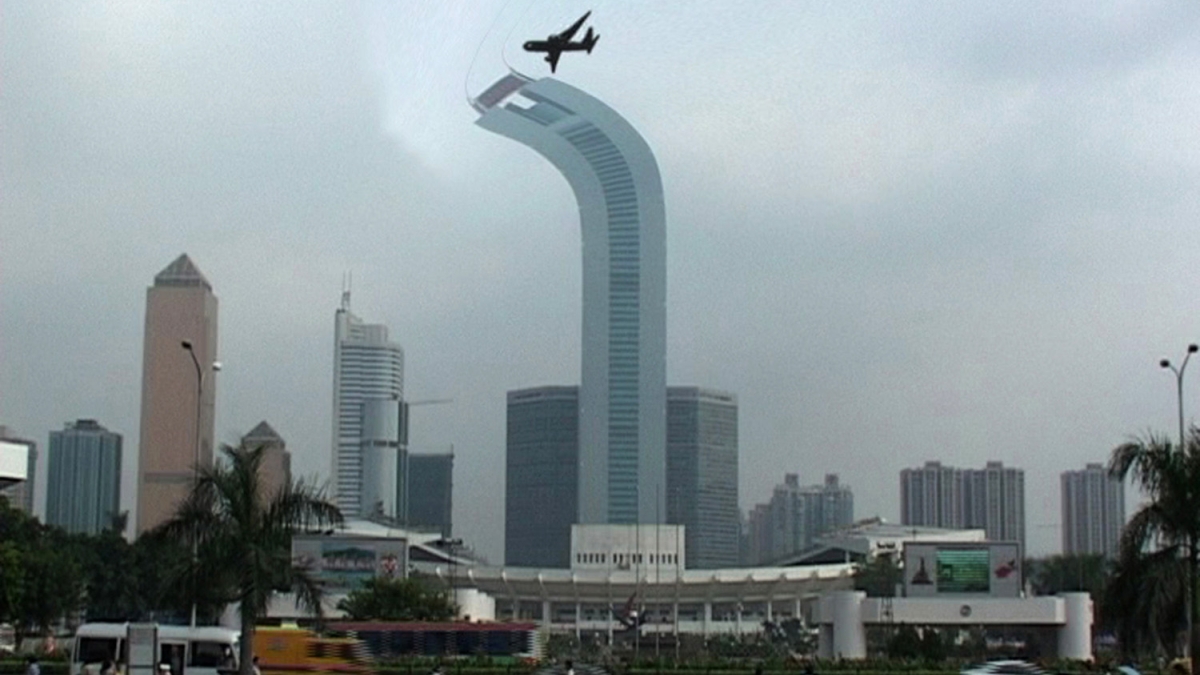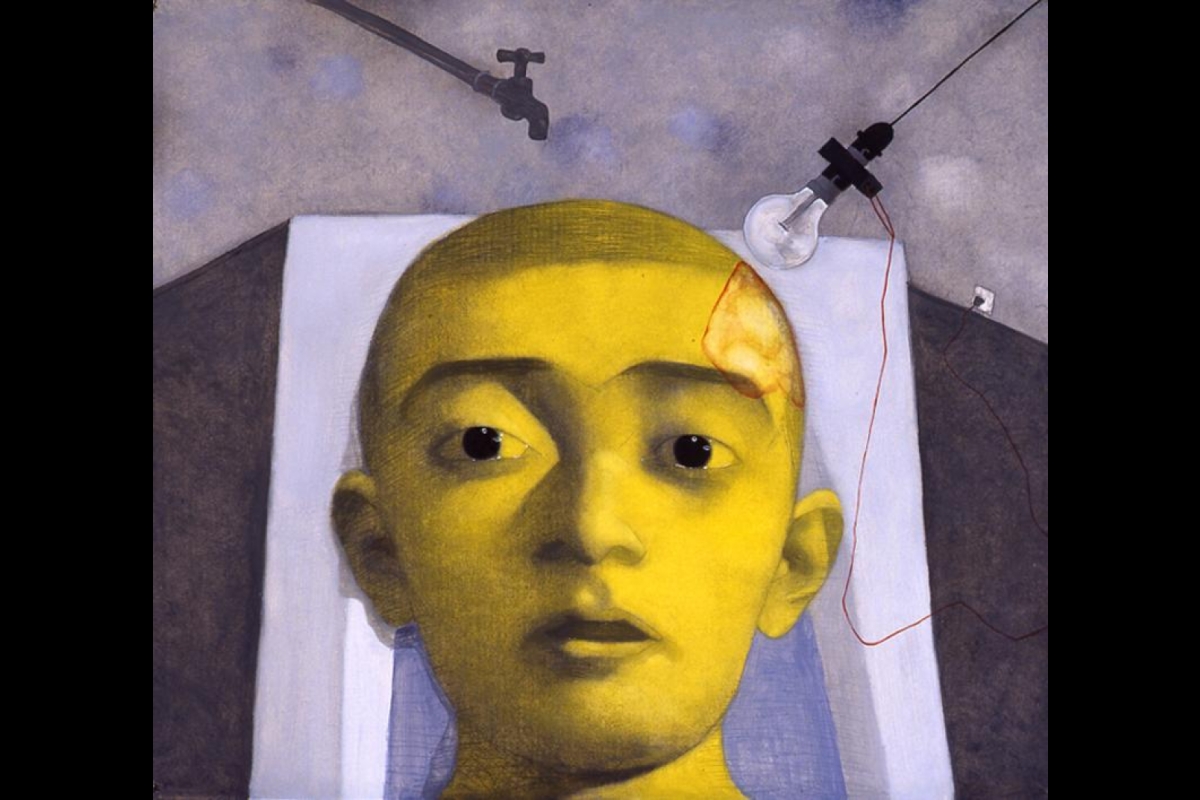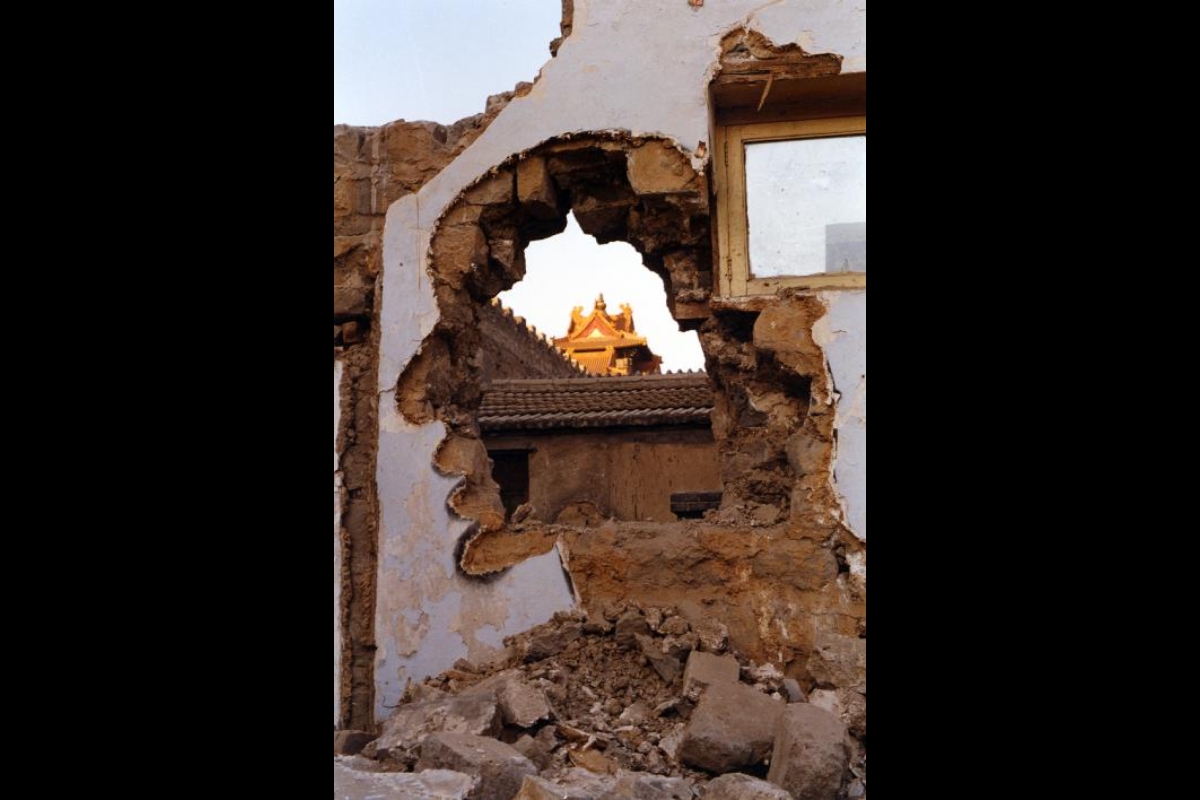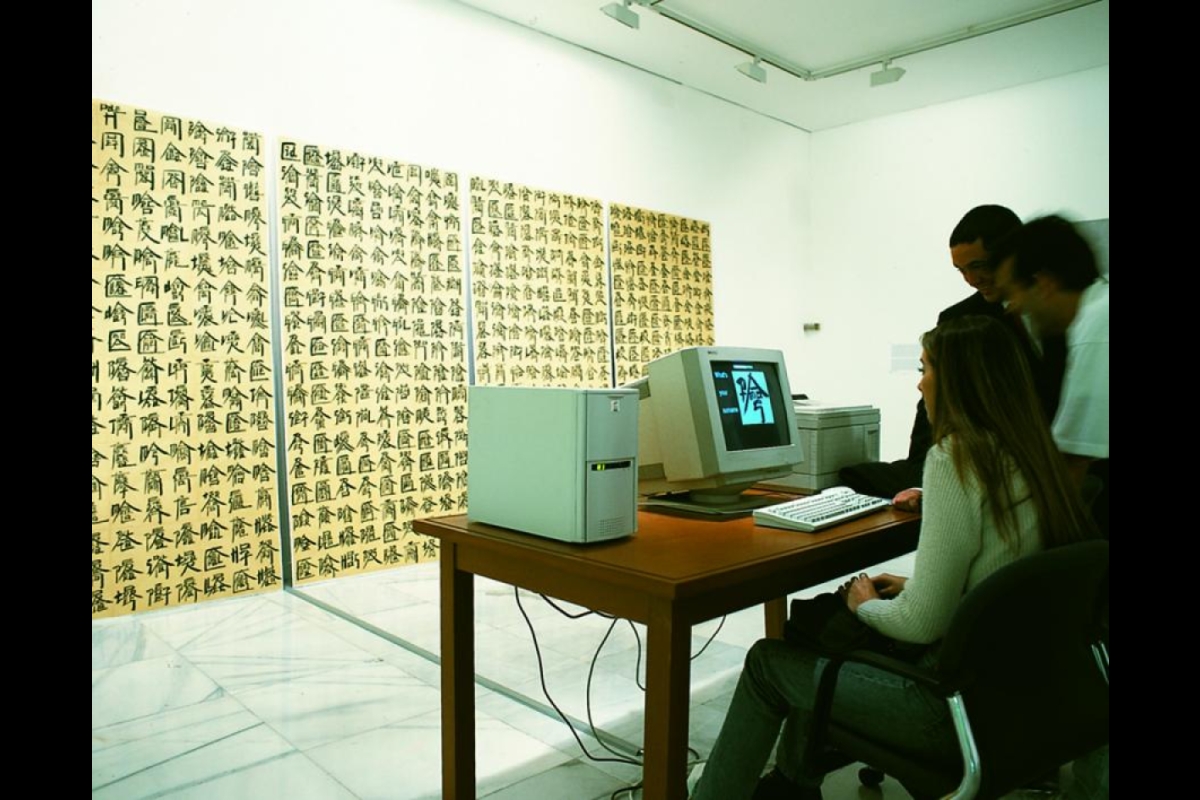Regeneration: Contemporary Chinese Art from China and the U.S. surveys the new Chinese avant-garde at the ASU Art Museum

Chen Shaoxiong
Anti-terror Variety, 2002, digital video, 5 minutes, 11 seconds
Photo courtesy of Herberger Institute for Design and the Arts.
TEMPE, Ariz. - It could be considered a cultural revolution in the Chinese art world. Chinese artists born in the 1950s, 1960s and 1970s are reconstructing their cultural, historical and artistic foundations into a new form of art revealed in Regeneration: Contemporary Art from China and the U.S. , on exhibit at the ASU Art Museum Sept. 24-Dec. 24.
Regeneration is a national touring exhibition of 50-plus artworks by 26 artists, organized by the Samek Art Gallery at Bucknell University (Lewisburg, Pa.). The eight-venue tour stops at the ASU Art Museum, preceded by a show in Los Angeles. The Los Angeles Times saysRegeneration is "an opportunity to catch up with Chinese artists who are making a mark at home and abroad."
"Since the mid-eighties, there has been a growing interest in contemporary Chinese art in the West," says Samek Art Gallery Director Dan Mills, who curated the exhibition with Bucknell art professor and artist Xiaoze Xie. "After the death of Mao Zedong in 1976, decades of isolationism and cultural restrictions that influenced the production and exhibition of art gave way to a period of remarkable and fast-paced development."
The result of this fast-paced development can be seen in Regeneration's astounding array of drawings, paintings, installations, videos, photography, prints and sculptures created from 1997 to 2003. The artists, who were born in China and live in Beijing, Shanghai, Guangzhou, New York and Pennsylvania, have merged Chinese art traditions with Western modernist ones to create high impact works informed by global trends.
"Regeneration includes internationally known artists like Xu Bing and Zhang Huan, who live outside of China, as well as artists who live and work in China and are rarely seen in the West," says ASU Art Museum Senior Curator Heather Lineberry. "This show is an exceptional opportunity to see the exciting energy and the range of innovation in contemporary Chinese art."
One example of Regeneration's East meets West artistic convergence is the conceptual work of Ai Weiwei, who reconstructs Ming and Qing Dynasty furniture. "Ai's hybrid furniture twists, stretches and toddles uncomfortably in our familiar space, reminding us of the awkward position of traditional Chinese culture in contemporary life," says Xie.
Anti-terror Variety , by Chen Shaoxiong, is a digital video animation of Guangzhou skyscrapers magically bending and splitting to avoid low-flying jets eerily similar to those used in the 9-11 attacks.
Xu Bing's multimedia installation Computer Font Project invites viewers to type English words into a software program that translates the words into Chinese-style English characters that can printed out in the gallery. The project combines with Xu's Square Word Caligraphy ink-on-rice paper work to help English-speakers demystify the Chinese language.
Other artists exhibiting works include Cai Jin, Chen Lingyang, Wenda Gu, Hai Bo, Hong Hao, Hong Lei, Hu Jieming, Jun-Fei Ji, Li Yongbin, Liang Juhui, Lin Tianmiao, Liu Wei, Liu Xiaodong, Qiu Zhijie, Xiaoze Xie, Xu Zhen, Yu Hong, Zhang Dali, Zhang Huan, Zhang Xiaogang, Zhang Yajie, Zhao Liang, Zhou Xiaohu.
Regeneration is one of three contemporary Asian art exhibitions opening at the ASU Art Museum in the fall of 2005. Others include Akio Takamori: Between Clouds of Memory,Sept. 9 - Jan. 16, a mid-career survey of contemporary ceramic sculpture and graphic art by the inventive Japanese artist who lives in Seattle; and Stella Lai: Let's Stop Pretending, Sept. 1 - Nov. 19, the first solo museum exhibition of paintings and installations by the 30-year-old emerging artist born in Hong Kong and living in San Francisco.
Some of the artworks in the Regeneration exhibition contain nudity and violence and are recommended for mature viewers.
The ASU Art Museum is part of the Herberger College of Fine Arts at Arizona State University and is located on the southeast corner of Mill Avenue and 10 th Street in Tempe. Exhibition hours are 10 a.m. - 9 p.m., Tuesdays and 10 a.m. - 5 p.m. Wednesday through Saturday. Admission is free. For more information, call (480) 965-2787 or visit the museum online at http://asuartmuseum.asu.edu .
Media Contact:
Denise Tanguay
480.965.7144
denise.tanguay@asu.edu


